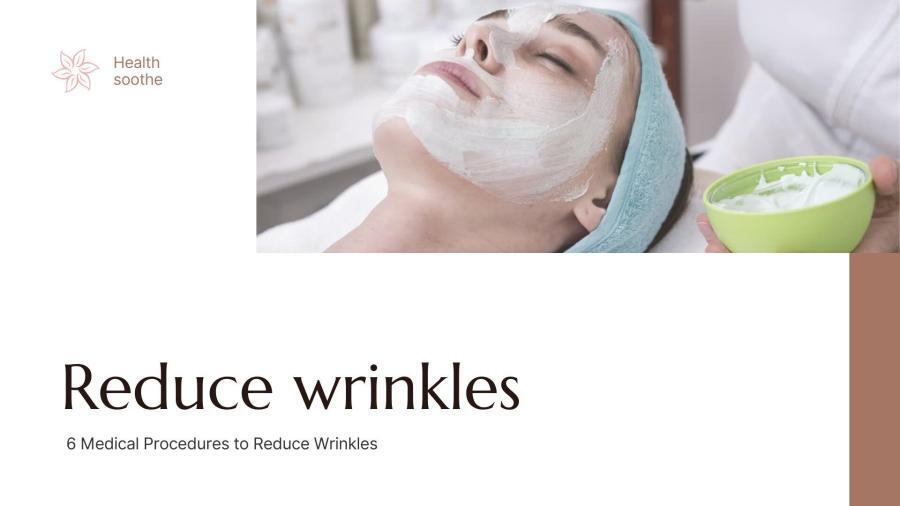With age, we learn much, experience many things, and our decisions become much wiser. The brain improves, but the skin can need a little help at that stage. While wrinkles are natural and only reflect the hurdles we overcome in our lives, wanting a more youthful look is nothing to be frowned upon.
As we age, the inner layer of the skin called the dermis becomes more thin and elastic. The body also starts to break down a protein known as collagen, which leads to skin becoming looser and wrinkles forming. Thankfully, we live in a time where medical procedures have evolved to reverse this process and give us back our youthful glow. Here are some medical procedures you may opt for to reduce wrinkles.
Botox
Botox procedures, like Dysport, are perhaps the most sought-out procedure to remove wrinkles. First, your physician will ask you to perform a few facial exercises to understand which muscles are responsible for the wrinkles. Then they will carefully administer the botulinum toxin solution into your muscle, which will paralyze your muscle activity in the affected area. The effects of the treatment usually last for three months. Botox can be used against wrinkles on your forehead, under the eyes, nose, and neck.
Fillers
Fillers are substances directly injected into your skin to smooth wrinkles making them less noticeable. The procedure is done with a numbing solution and can last up to an hour. You may require a touch-up after the process is complete. Since there are multiple types of facial fillers, the results vary and depend on the wrinkle it is used to treat. It is crucial to find a suitable filler for you because some people prove to be allergic to some fillers. Common face fillers include:
- Hyaluronic acid
- Radiesse
- Fat grafting
- Bellafil
- Sculptra
- Hjklllll
Chemical Peels
Chemical peels treat wrinkles and discolored skin. However, the process will be ineffective if your wrinkles are too deep. Peels consist of three levels: light, medium, and deep.
- A light chemical peel only removes the outer layer of your skin. The results from this method will last a few weeks, and you can repeat the procedure after three to five weeks.
- A medium-strength chemical peel removes unwanted skin cells from the upper and medium layers of skin. You can opt for it every four to six months.
- A deep chemical peel removes unsuitable skin cells from deeper skin layers, and you can obtain optimum results from only one session.
Skin peels can lead to temporary side effects, such as redness, swelling, scarring, and changes in skin tone. The time your skin takes to heal depends on the strength of the procedure you undergo. It is vital to know that doctors only recommend this procedure after assessing your medical history, as it can harm patients who have been on acne medication.
Dermabrasion
Dermabrasion is another skin-resurfacing procedure that helps with skin imperfections, like fine lines and wrinkles. For this procedure, the doctor first numbs your skin with an anesthetic or provides you with a sedative, then proceeds to remove the upper layer of your skin with a constantly rotating brush. The procedure consists of several sessions for you to obtain optimum results. Side effects may include swelling and redness. Your doctor will further advise you to protect your skin from the sun for up to 12 months to avoid permanent skin color changes.
Laser Skin Resurfacing
Doctors mostly use laser skin resurfacing to remove wrinkles, acne, and scars. With the aid of a laser, short beams of light are sent to rough patches of skin to remove unwanted skin one layer at a time. As the laser treatment removes the outer layer of your skin, it heats the one underneath it. This heat causes new collagen fibers to grow, making your new skin form more smooth and firm. The skin takes ten days to heal from the procedure, and the effects can last up to three to five years.
Facelift
Facelifts help pull back loose skin, so to counter wrinkles, you can consider getting a facelift or the procedure done on a specific area, such as a forehead lift or eye lift. In a facelift, an incision is made at the hairline or chin, loosening the skin and then tightening it through the underlined muscles. A facelift is recommended by doctors when treatments like botox and fillers stop having any effect.
Bruising and swelling are common side effects of the surgery. The healing can last up to five weeks before you can continue your everyday routine. On the positive side, a full facelift’s results can last for 15 years.
Endnote
No matter your skin type, you should feel beautiful in it. However, if wrinkles are taking a toll on your confidence, you can opt for these procedures. A doctor’s consultation before choosing the treatment to reduce your wrinkles is vital, and only a certified expert should perform such processes. There is a misconception surrounding procedures countering wrinkles that they are dangerous. This is only a myth as most of the above-mentioned procedures are risk-free and are only performed by doctors after they ensure the side effects will not harm you.





